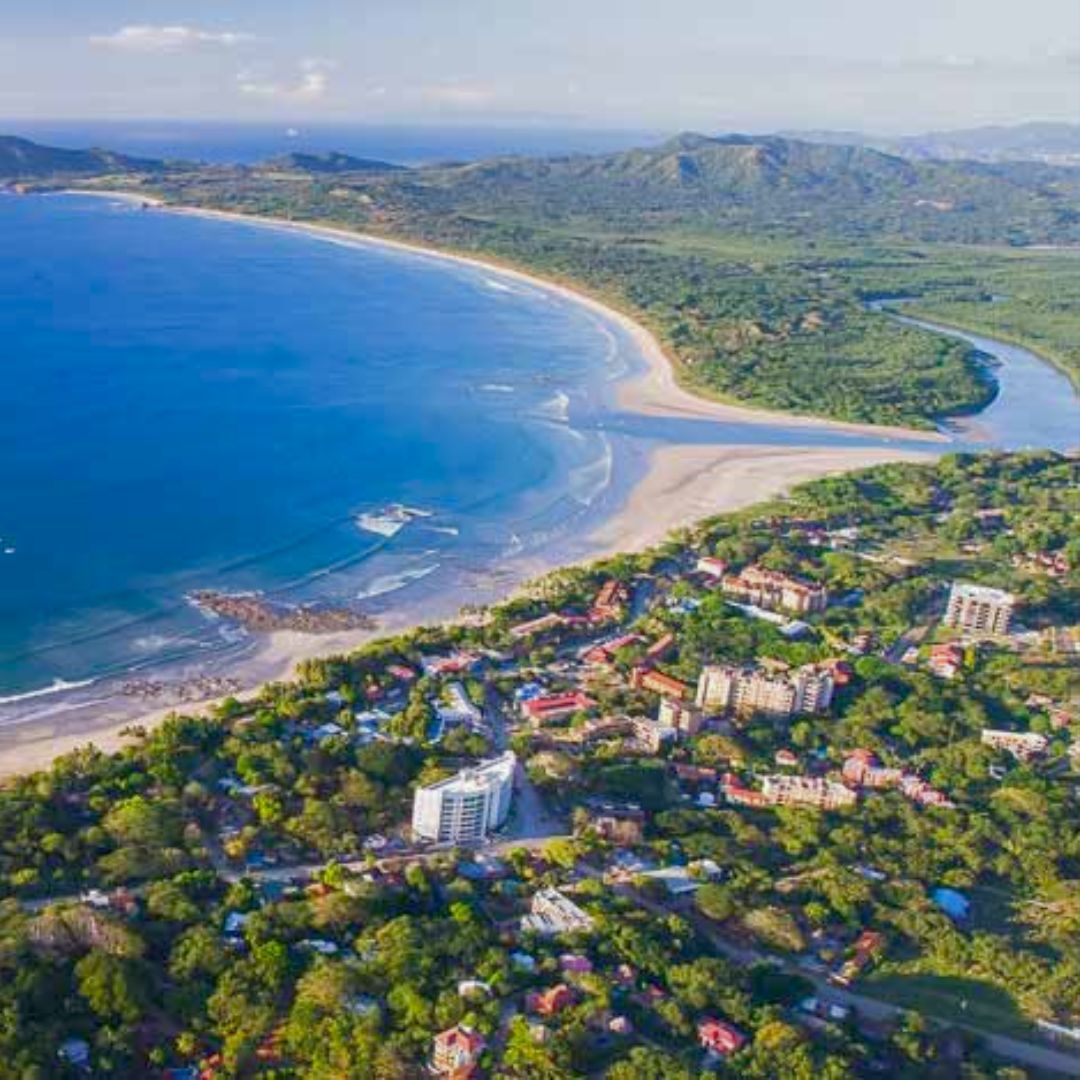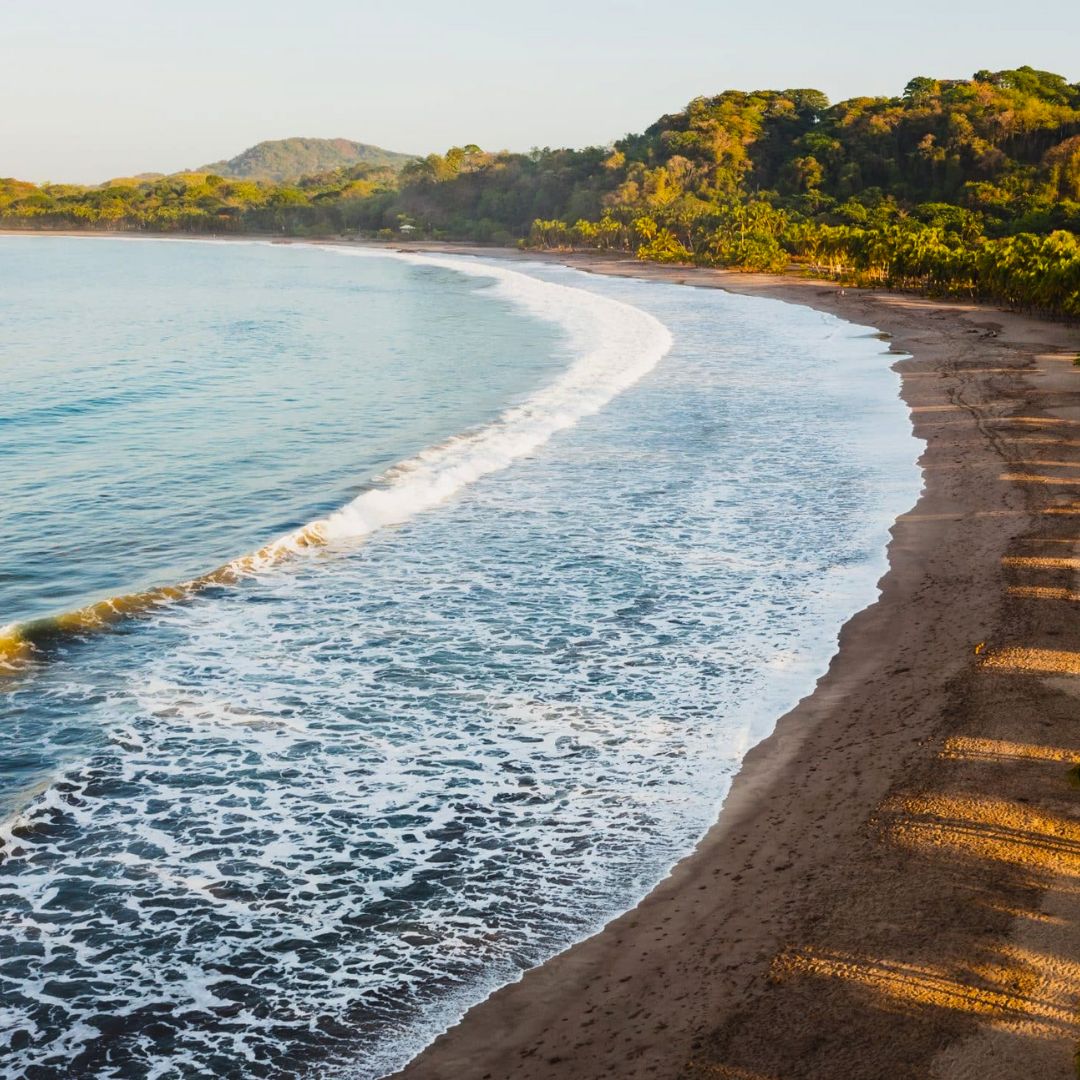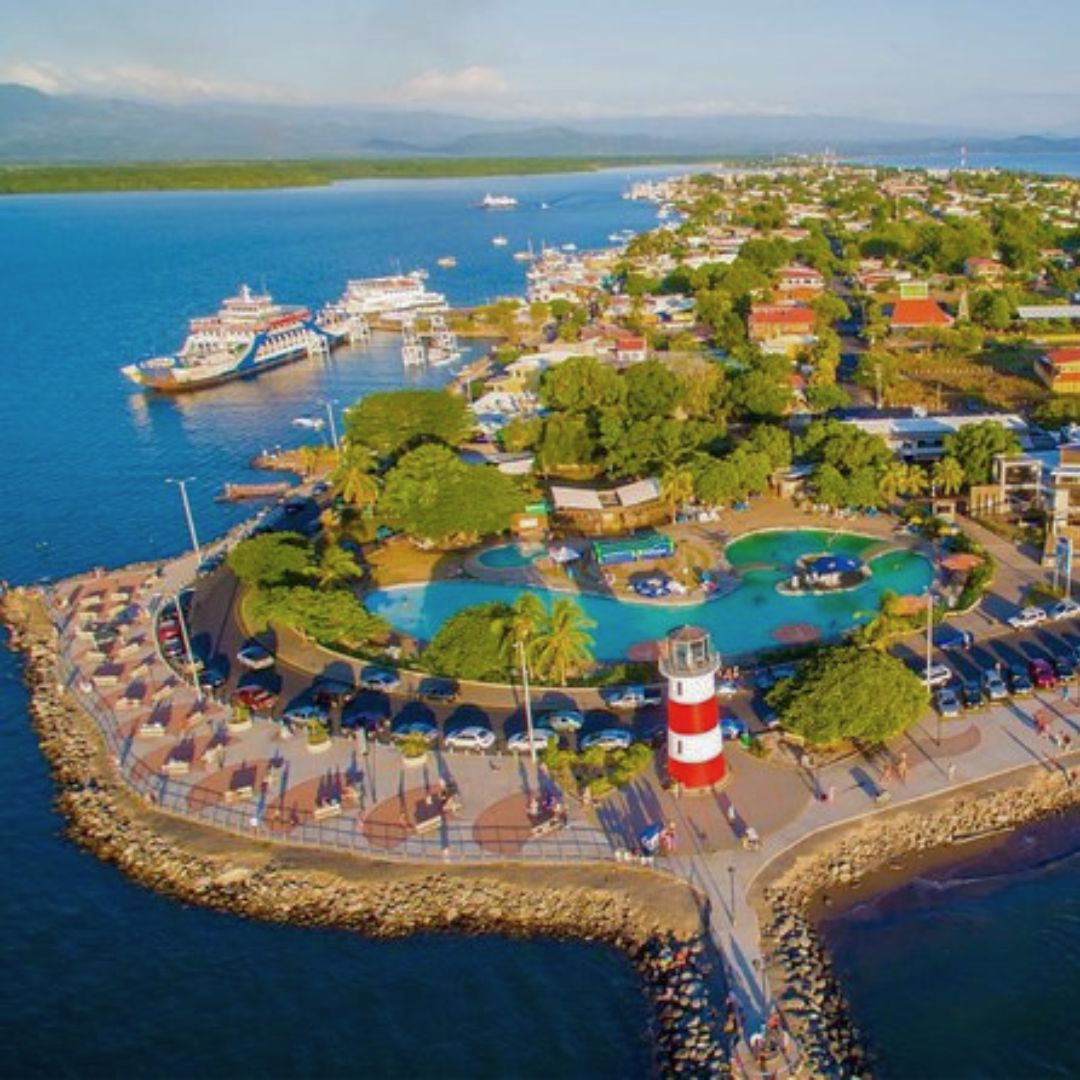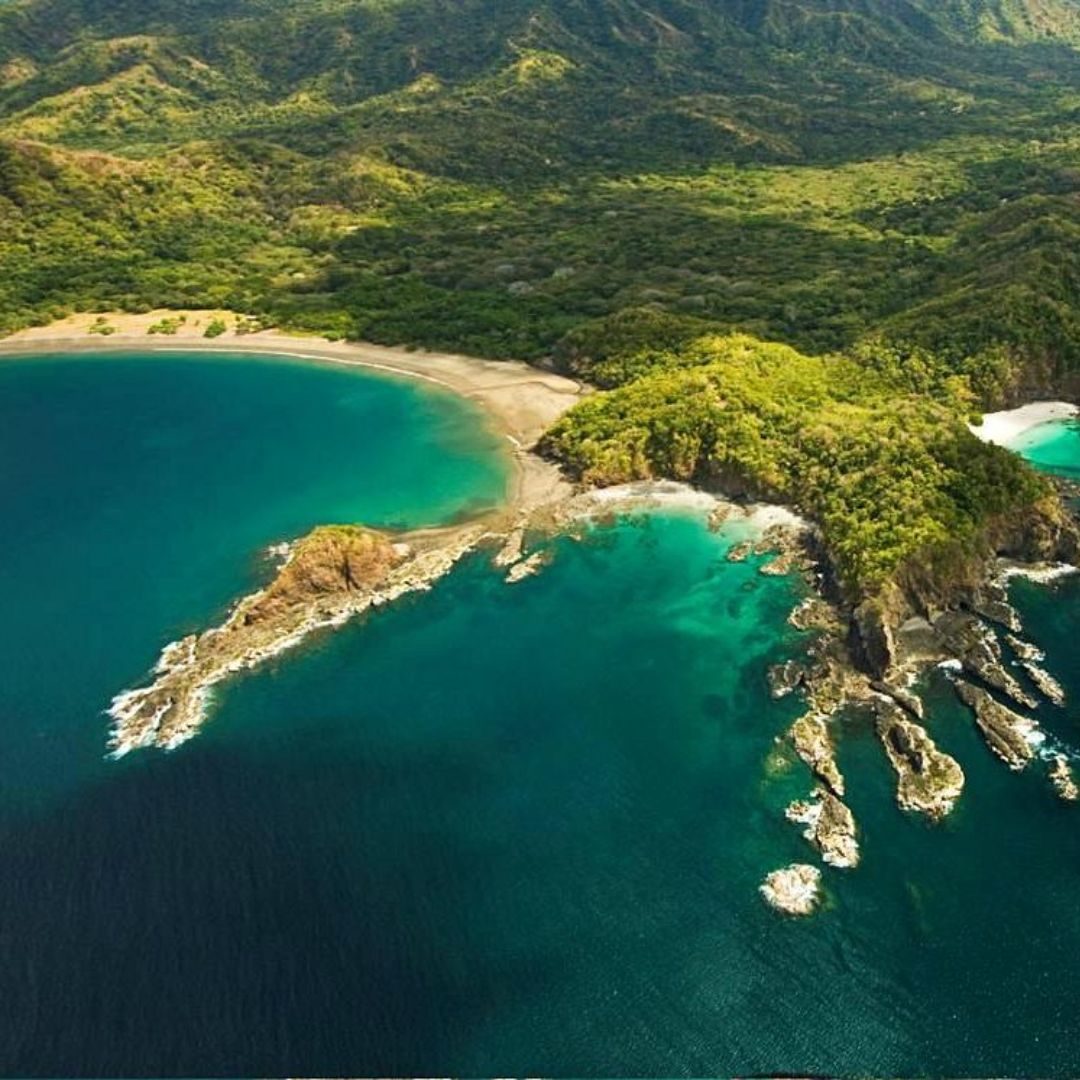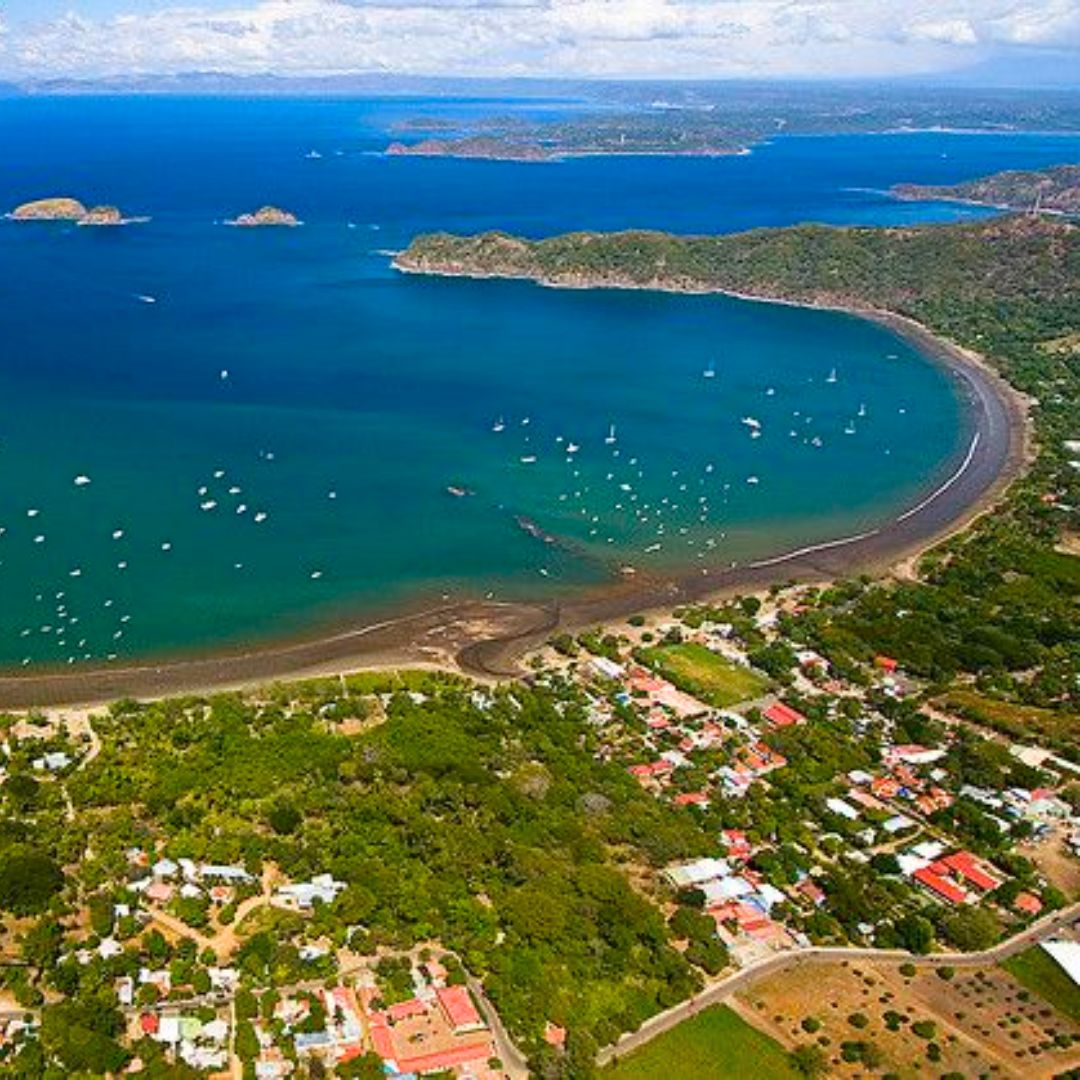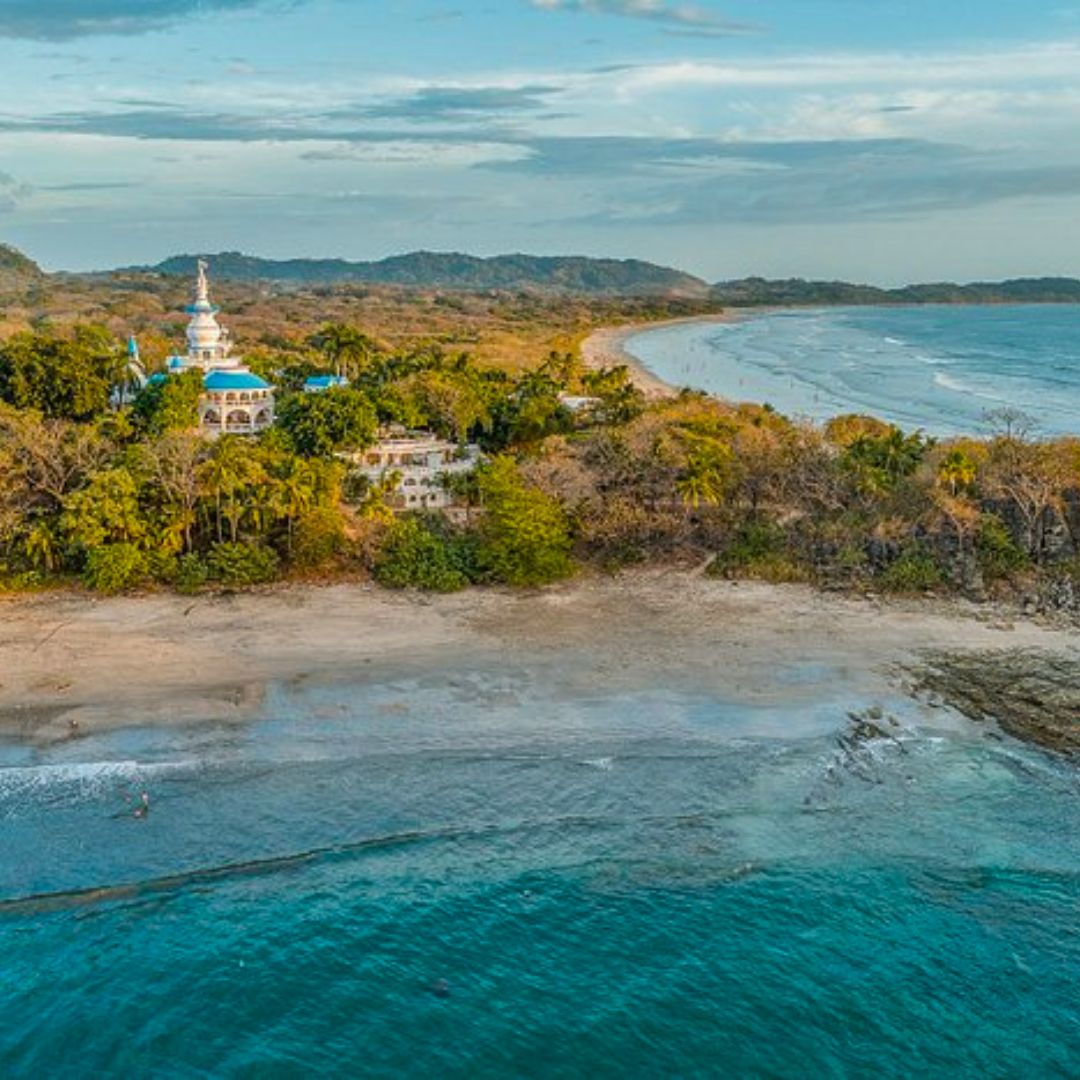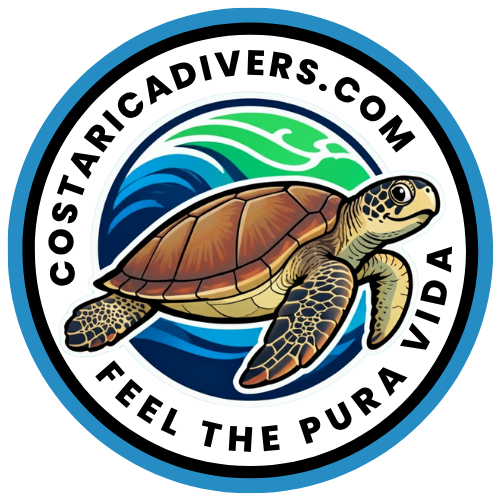Costa Rica packs extraordinary diversity into a country smaller than West Virginia. Within a few hours’ drive, you can transition from misty cloud forests to sun-drenched Pacific beaches, from active volcanoes to tranquil Caribbean shores, from bustling urban centers to remote wilderness where jaguars still roam.
This diversity creates a wonderful problem: with limited vacation time, how do you choose where to go?
I’ve spent years exploring Costa Rica’s regions, from the popular tourist circuits in the north to the less-traveled corners of the Osa Peninsula. As someone who operates a dive center in the South Pacific, I could easily tell you that my region is the only place worth visiting. But that wouldn’t be honest, and it wouldn’t help you plan the trip that matches your interests, travel style, and dreams.
So let’s explore Costa Rica’s destinations honestly. I’ll share what makes each region special, what you’ll actually find there (beyond the marketing hype), and how to choose the right places for your adventure.

Costa Rica divides naturally into six distinct regions, each with its own climate, landscape, activities, and character.
The Pacific Coast stretches the entire western side of the country, but breaks into three very different zones: the dry forests and resort beaches of the North Pacific (Guanacaste), the accessible parks and developed towns of the Central Pacific, and the wilder, less-visited South Pacific coast where rainforest meets ocean.
The Caribbean Coast offers a completely different vibe: Afro-Caribbean culture, laid-back beach towns, year-round rain that keeps everything lush, and some of Costa Rica’s best snorkeling in coral reefs.
The Central Valley and Highlands encompass San José and the surrounding coffee-growing mountains. This is where most Ticos (Costa Ricans) actually live, and it offers cultural experiences, cooler temperatures, and easy access to volcanoes and coffee plantations.
The Northern Lowlands include the Arenal Volcano region and Sarapiquí rainforests. This is adventure territory: zip lines, hot springs, whitewater rafting, and hiking around one of Costa Rica’s most iconic landmarks.
The Cloud Forests blanket the mountains in mist and moss. Monteverde is the most famous, offering cooler temperatures, unique ecosystems, and some of the world’s best birdwatching.
The Osa Peninsula in the far south protects the most biologically intense rainforest in Central America. Remote, wild, and extraordinary for serious nature lovers.
Most travelers visit 2-3 regions in a week, or 3-5 regions in two weeks. Let’s explore what each offers so you can build your perfect itinerary.
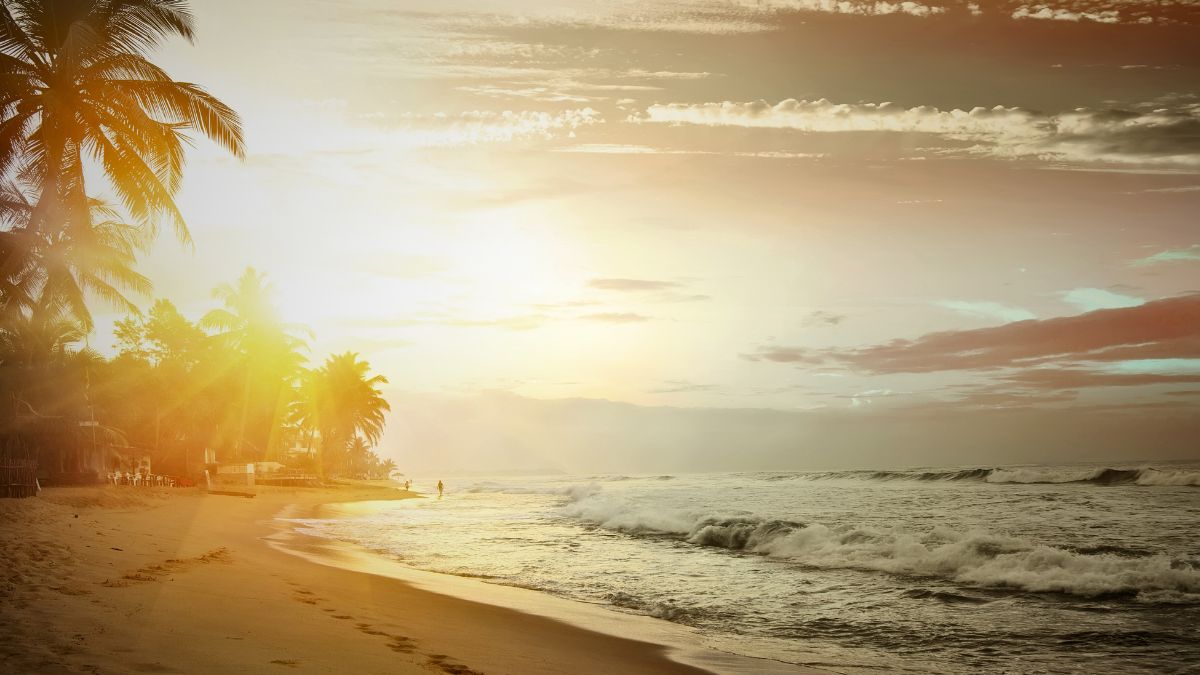
Costa Rica’s Pacific coastline offers something for everyone, but the character changes dramatically as you travel from north to south.
What You’ll Find: The Guanacaste province dominates Costa Rica’s northwest corner, offering distinctly different conditions from the rest of the country. This is the driest region, with true dry season where rain nearly disappears from December through April. Landscapes transition from tropical dry forest to savanna in some areas, and beaches range from surf towns to exclusive resorts.
Key Destinations:
Best For: Beach lovers who want guaranteed sunshine, surfers of all levels, luxury resort seekers, families wanting all-inclusive ease, those who prefer drier climates.
Activities: Surfing, sport fishing, sailing, catamaran tours, zip-lining, ATV tours, resort relaxation, turtle nesting (seasonal).
Why It’s Popular: Closest beaches to Liberia International Airport (30 minutes to 1.5 hours), dry season reliability, well-developed tourism infrastructure, beautiful beaches with calm and surf options.
Honest Assessment: Guanacaste delivers exactly what many travelers want: beautiful beaches, reliable weather, easy logistics, and abundant activities. It’s also the most developed, touristy part of Costa Rica. If you’re seeking undiscovered authenticity, look elsewhere. If you want comfort, convenience, and gorgeous Pacific sunsets, Guanacaste excels.
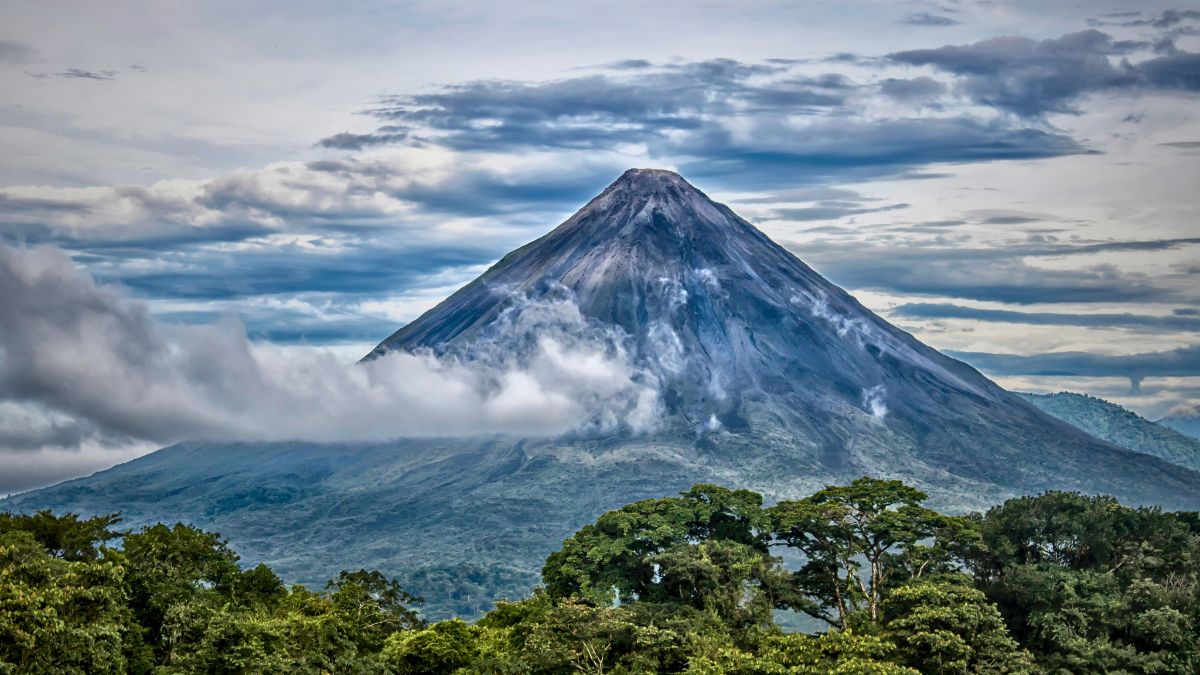
What You’ll Find: The Central Pacific sits between Guanacaste and the South Pacific, offering the most accessible beach destinations from San José (2-3 hours). This region developed early for tourism and provides a middle ground between Guanacaste’s dry forests and the South Pacific’s rainforests.
Key Destinations:
Best For: First-time visitors wanting easy access from San José, families seeking safe wildlife viewing, those with limited time, travelers who want both beach and jungle without extensive travel.
Activities: Wildlife watching in Manuel Antonio, surfing (Jacó), sportfishing, canopy tours, waterfall visits, mangrove kayaking.
Why It’s Popular: Closest major beach destination to San José, Manuel Antonio’s combination of accessible wildlife and beautiful beaches, good tourism infrastructure.
Honest Assessment: Manuel Antonio National Park genuinely deserves its reputation. The wildlife viewing is excellent, beaches are beautiful, and trails are well-maintained. However, it’s also crowded. You’ll share those trails and beaches with hundreds of others during peak season. The surrounding area has developed rapidly, with hotels and restaurants lining the road into the park. It’s worth visiting, but go with realistic expectations about crowds.
What You’ll Find: This is where I’m based, so I’ll be honest about both strengths and limitations. The South Pacific remains less developed than regions north, offering authentic coastal villages, pristine marine reserves, and a distinct feeling of discovery. Rainforest reaches the ocean here, creating lush landscapes and incredible biodiversity.
Key Destinations:
Best For: Travelers seeking less-crowded alternatives, divers (some of Costa Rica’s best diving), whale watching enthusiasts, surfers who want waves without massive crowds, those who value authenticity over polish.
Activities: Scuba diving (Marino Ballena and Isla del Caño), whale watching, surfing, waterfall hikes (Nauyaca Falls), Corcovado tours, snorkeling, wildlife watching, beach exploration.
Why It’s Less Crowded: Further from San José (3.5-4 hours), less developed tourism infrastructure, fewer luxury resort options, slightly less reliable weather than Guanacaste (though still excellent).
Honest Assessment: The South Pacific offers what many travelers say they want: authentic experiences, incredible nature, less tourist development, and some of Costa Rica’s best marine environments. The trade-off is longer travel time from San José, fewer luxury accommodations (though excellent mid-range and eco-lodge options exist), and you need to be more flexible about weather. If you want pristine nature and don’t need resort amenities, this region delivers something special.
Did you know? Costa Rica is one of only a few places where humpback whales from both hemispheres migrate, creating nearly year-round whale watching opportunities. The South Pacific coast sees Northern Hemisphere whales December through April and Southern Hemisphere whales July through November.
Costa Rica’s Caribbean side offers a completely different experience from the Pacific. The culture, landscape, climate, and vibe all shift dramatically once you cross the mountains.
What You’ll Find: Afro-Caribbean influence defines this coast, with reggae music, Caribbean cuisine, and a distinctly relaxed atmosphere. Rain falls year-round here (no true dry season), keeping everything lush and green. The vibe is slower, more laid-back, and less developed than Pacific tourist towns.
Key Destinations:
Best For: Those seeking Caribbean culture and cuisine, snorkelers (coral reefs), turtle nesting enthusiasts, travelers who don’t mind rain, those wanting a different side of Costa Rica from typical Pacific beach trips.
Activities: Snorkeling (coral reefs), turtle nesting tours (seasonal), surfing (Salsa Brava break for advanced), kayaking through canals, wildlife watching, chocolate tours, indigenous culture experiences.
Weather Reality: The Caribbean gets more rain than Pacific regions, and it doesn’t have a reliable dry season. September and October see the least rain, but you should expect some precipitation any time of year. The constant rain keeps everything green and lush.
Honest Assessment: The Caribbean offers authentic cultural experiences you won’t find on the Pacific side. The food, music, and atmosphere feel genuinely different. However, the weather can be challenging if you’re planning a beach vacation. Snorkeling the coral reefs is excellent, but ocean conditions can be rough. This region works best combined with Pacific destinations or for travelers specifically seeking Caribbean culture and who accept variable weather.
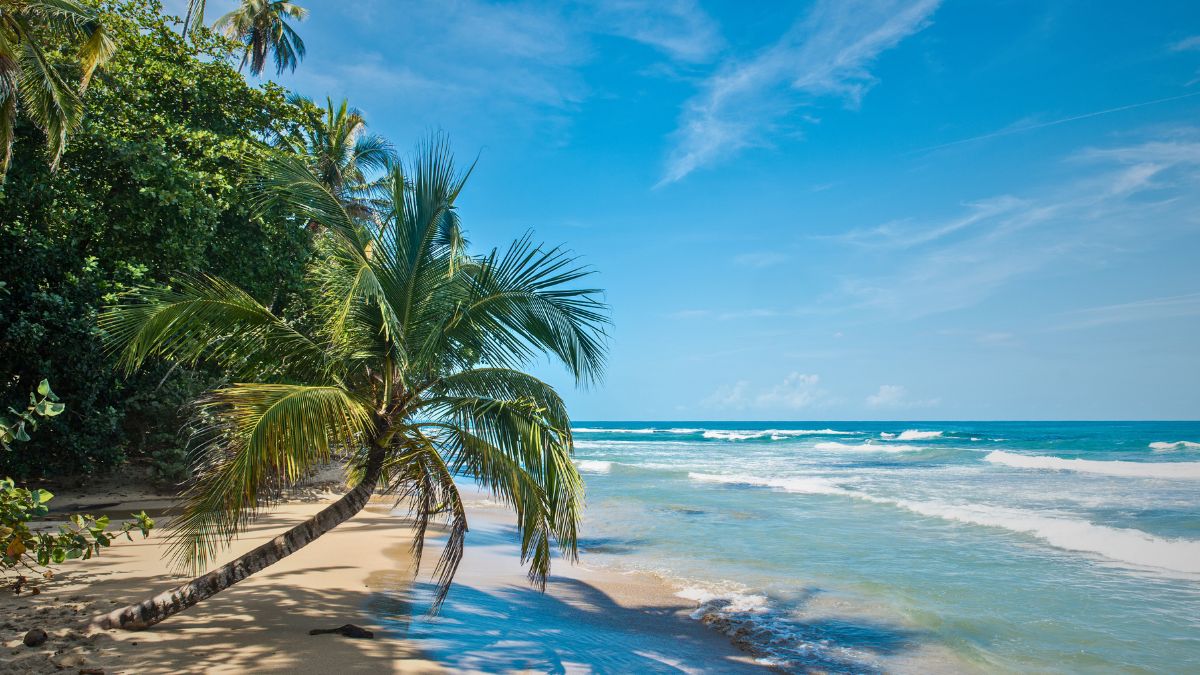
This is where most Costa Ricans actually live, yet many tourists skip it entirely in favor of beaches and volcanoes. That’s a mistake if you want to understand the country beyond its natural attractions.
What You’ll Find: The Central Valley sits at moderate elevation (3,000-5,000 feet), creating a perpetual spring climate: comfortable temperatures year-round, no oppressive heat, pleasant evenings. San José, the capital, anchors the valley, surrounded by coffee plantations, smaller towns, and mountains.
Key Destinations:
Best For: Cultural experiences, coffee enthusiasts, those who prefer mild climates to beach heat, volcano viewing, travelers interested in Costa Rican daily life beyond tourism zones.
Activities: Museum visits, coffee tours, volcano day trips, market exploration, authentic dining, cultural experiences, shopping.
Honest Assessment: Most beach-focused itineraries skip the Central Valley entirely. If that’s your trip, fine. But spending a day or two in San José and surroundings adds cultural depth and reveals the Costa Rica where people actually live and work. The museums are genuinely good, coffee tours are educational and delicious, and the mild climate is refreshing after beach heat.

Northern Costa Rica, dominated by Arenal Volcano and surrounding rainforests, might be the country’s most visited region outside beaches. There’s good reason: it delivers adventure, iconic scenery, and abundant activities in a relatively compact area.
What You’ll Find: Arenal Volcano, a nearly perfect cone, serves as the region’s landmark. The town of La Fortuna sits at its base, functioning as an adventure tourism hub with excellent infrastructure. Rainforest surrounds the volcano, Lake Arenal stretches nearby, and hot springs bubble up throughout the area thanks to volcanic activity.
Key Destinations:
Best For: Adventure seekers, families (wide range of activities and safety), first-time visitors wanting iconic Costa Rica experiences, those who want comfort and adventure combined, volcano enthusiasts.
Activities: Zip-lining, hanging bridges, hot springs soaking, whitewater rafting, waterfall hikes (La Fortuna Waterfall), wildlife watching, horseback riding, kayaking, stand-up paddling.
Why It’s Popular: Arenal Volcano provides an instantly recognizable landmark, diverse activities suit various ages and abilities, excellent tourism infrastructure, moderate climate (warmer than highlands, not as hot as beaches).
Honest Assessment: Arenal delivers everything it promises. The activities are well-run, the scenery is spectacular, and you genuinely can do something different each day. It’s also heavily touristed, with large groups common on popular activities. The volcano itself rarely shows its peak due to cloud cover (mornings offer best chances), and it’s no longer actively erupting (last major activity was 2010). Despite these realities, Arenal remains worth visiting for the combination of adventure activities and beautiful rainforest setting.
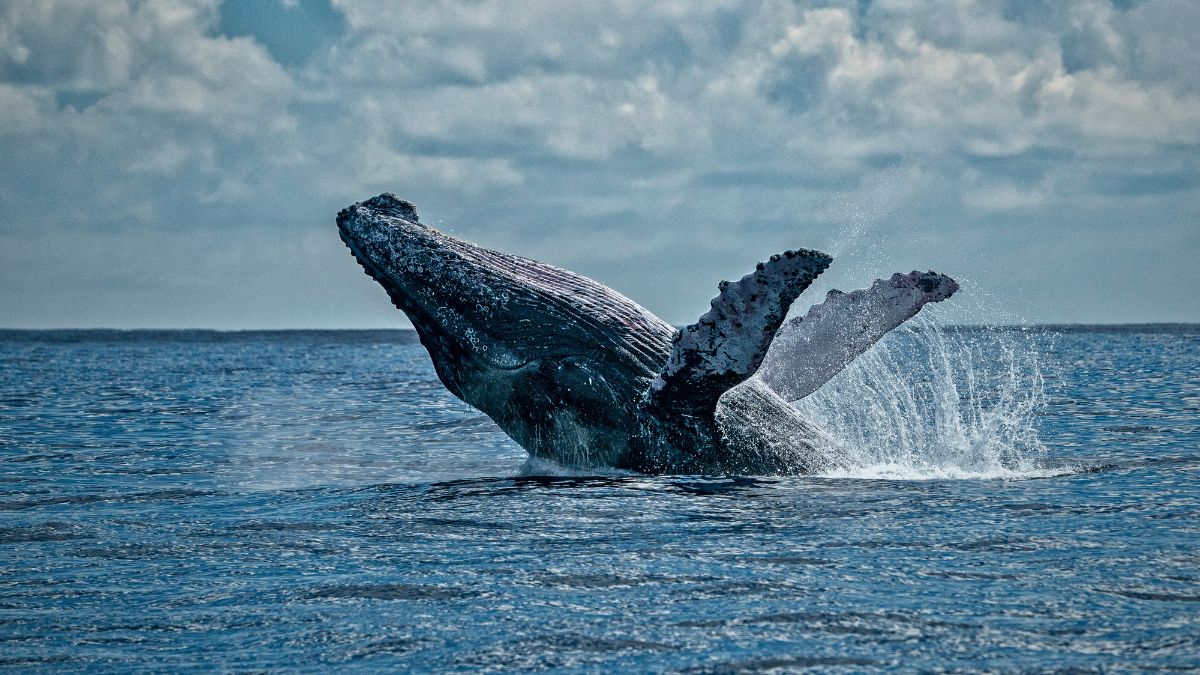
Costa Rica’s cloud forests exist where elevation creates constant mist, producing unique ecosystems draped in moss, bromeliads, and orchids. These forests feel prehistoric: dense, dripping, and alive with birds.
What You’ll Find: Cool temperatures (60s-70s°F), constant mist and clouds, incredible biodiversity concentrated in forest canopy, and some of the world’s best birdwatching. The most famous cloud forest is Monteverde, but several others offer similar experiences with fewer visitors.
Key Destinations:
Best For: Birdwatchers (especially quetzal seekers), nature photographers, those who prefer cool climates to beach heat, travelers seeking peaceful forest immersion.
Activities: Guided nature hikes, birdwatching, hanging bridge walks, canopy tours, coffee tours, visiting reserves and parks.
Travel Logistics: Monteverde sits on rough roads requiring 3-4 hours from San José or La Fortuna. The famous “Jeep-Boat-Jeep” transfer from Arenal to Monteverde (crossing Lake Arenal) is scenic but adds cost. San Gerardo de Dota sits right on the Pan-American Highway, making it more accessible.
Honest Assessment: Cloud forests offer something genuinely different from beaches and volcanoes. The misty, moss-covered forest creates an otherworldly atmosphere. However, it’s cool and often wet. You’ll be hiking in light rain or mist much of the time. If you love birds, unique ecosystems, and don’t mind cooler temperatures, cloud forests are essential. If you’re primarily a beach person who wants warmth and sunshine, they might not resonate.

The Osa Peninsula juts into the Pacific in Costa Rica’s far south, protecting the last significant tract of Pacific lowland rainforest in Central America. This is for serious nature lovers.
What You’ll Find: Corcovado National Park, often called “the most biologically intense place on Earth,” contains 2.5% of the world’s biodiversity in less than 425 square kilometers. Jaguars, tapirs, four monkey species, scarlet macaws, peccaries, and over 400 bird species live here. This is wilderness in the truest sense.
Key Destinations:
Best For: Serious wildlife enthusiasts, bucket-list nature experiences, adventurous travelers comfortable with remote conditions, divers (Isla del Caño access from Drake Bay).
Activities: Corcovado hiking tours, Isla del Caño diving and snorkeling, kayaking, wildlife watching, birdwatching.
Reality Check: The Osa is remote, rustic, and requires commitment. Accommodations lean toward eco-lodges. Roads are rough. Services are limited. Internet is spotty. It rains a lot. And it’s absolutely extraordinary if you care deeply about nature and wildlife.
Honest Assessment: Corcovado delivers wildlife encounters impossible elsewhere in Costa Rica. Seeing tapirs, scarlet macaws, and four monkey species in a single day is realistic here. The concentration of biodiversity is stunning. But it’s also hot, humid, buggy, and challenging. Don’t come here expecting comfort or convenience. Come here if seeing incredible wildlife in pristine rainforest matters more than amenities.
Fun fact: Corcovado National Park is one of the only places in Central America where you can still see all four Costa Rican monkey species: howler monkeys, spider monkeys, white-faced capuchins, and endangered squirrel monkeys. The park protects the entire ecosystem these species need to survive.
With so many options, how do you actually decide where to go?
I want beaches and sunshine: Guanacaste (North Pacific) offers the most reliable dry season and beautiful beaches. South Pacific provides similar beaches with fewer crowds but slightly less predictable weather.
I want diving and marine life: South Pacific (Uvita/Drake Bay) offers Costa Rica’s best diving at Marino Ballena and Isla del Caño. Caribbean coast provides coral reef snorkeling. Guanacaste has decent diving but it’s not the primary draw.
I want adventure activities: Arenal region delivers the most concentrated adventure activities (zip lines, rafting, hot springs, hanging bridges) in one area.
I want wildlife and nature: Corcovado and Osa Peninsula provide the most intense wildlife experiences. Monteverde cloud forests excel for birdwatching. Manuel Antonio offers easy wildlife viewing for families.
I want surf: Dominical, Tamarindo, Nosara, Puerto Viejo, and Jacó all offer excellent surfing with different vibes and wave types.
I want culture and authenticity: Caribbean coast (Puerto Viejo) for Afro-Caribbean culture, Central Valley (San José) for urban Costa Rican life, South Pacific for quieter coastal villages.
I want luxury and comfort: North Pacific (Guanacaste) offers the most luxury resorts. Manuel Antonio has upscale options. Other regions lean more toward boutique hotels and eco-lodges.
Guanacaste (North Pacific): The driest region in Costa Rica with very high crowd levels and well-developed tourism infrastructure. Best for beach lovers seeking reliable weather, resort amenities, and convenient access. Located 3-4 hours from San José with nearby Liberia International Airport. Expect developed beaches with all services but less authentic local experience.
Arenal & Northern Lowlands: Moderate rainfall with high tourist traffic and excellent infrastructure. Perfect for adventure seekers and families wanting diverse activities in one area. The iconic volcano, hot springs, and adventure parks create an action-packed destination. Located 3 hours from San José with easy road access.
Monteverde Cloud Forests: Cool and misty year-round with moderate to high visitor numbers in developed reserves. Ideal for birdwatchers, nature photographers, and anyone seeking unique forest ecosystems. The climate is refreshingly cool (60s-70s°F) but expect mist and light rain. Located 3-4 hours from San José on rough roads.
Manuel Antonio (Central Pacific): Good dry season weather but very high crowds, especially in peak season. The most developed beach-jungle combination in Costa Rica. Excellent for families wanting easy wildlife viewing and beautiful beaches in one compact area. Closest major beach destination to San José at just 2.5 hours.
South Pacific (Uvita, Dominical, Drake Bay): Consistently good weather overall with low to moderate crowds and less tourism development. Best for divers, authentic coastal experiences, and nature lovers who value pristine environments over resort amenities. World-class diving at Marino Ballena and Isla del Caño. Located 3.5-4 hours from San José, with Drake Bay requiring boat or plane access.
Caribbean Coast: Rain falls year-round with no true dry season, creating lush green landscapes. Moderate tourist traffic with moderately developed towns retaining local character. Perfect for travelers seeking Afro-Caribbean culture, coral reef snorkeling, and a distinctly different Costa Rica experience. Located 4-5 hours from San José across the mountains.
Osa Peninsula & Corcovado: Hot, wet, and humid climate with very low visitor numbers due to remote location and minimal development. This is serious wilderness for dedicated nature enthusiasts and wildlife lovers. Expect extraordinary biodiversity but rustic conditions and challenging access by boat or small plane. Not for comfort seekers.
One Week: Choose 2 destinations. Popular combinations: Arenal + Guanacaste beaches, Arenal + Manuel Antonio, San José area + one beach region.
Two Weeks: Visit 3-4 destinations. Consider: Caribbean + Arenal + Pacific coast, or Central Valley + Arenal + Monteverde + South Pacific.
Three+ Weeks: You can explore 5-6 regions, including more remote areas like Drake Bay and Corcovado.
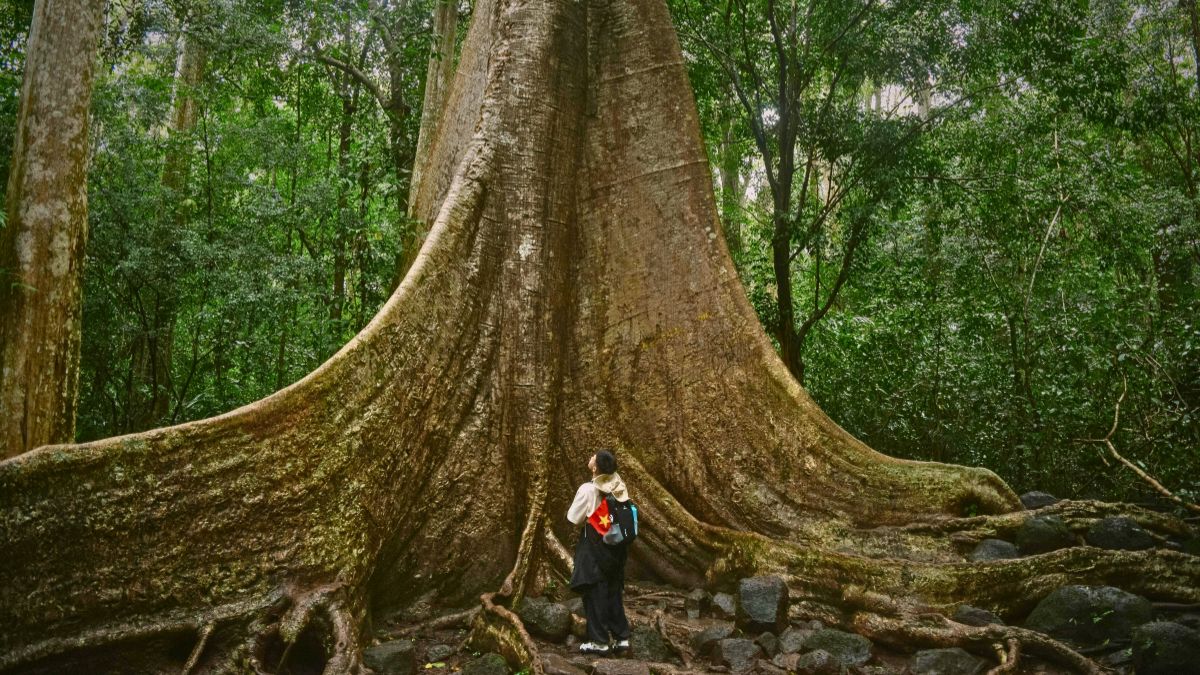
Start with Your Priorities: What matters most? Beaches, adventure, wildlife, diving, culture? Let your interests guide destination selection rather than trying to see everything.
Consider Geography: Costa Rica is small but mountainous. Some destinations combine easily (Uvita and Dominical are 15 minutes apart), others require significant travel time (Caribbean to Pacific requires crossing mountains, 5-6 hours).
Don’t Overschedule: Moving between destinations takes time. Spending 2-3 nights minimum in each place allows you to actually experience rather than just check boxes.
Mix Experiences: Combine different types of destinations. Beach + mountains + culture creates better trip rhythm than three beach towns or three adventure zones.
Build in Flexibility: Weather, fatigue, and unexpected discoveries happen. Leave some unscheduled time rather than booking every day solid.
Sample Two-Week Itinerary:
This itinerary combines culture, adventure, marine activities, beach time, and cloud forest in logical geographic order.

Costa Rica’s diversity means there’s no single “best” destination. The best place for you depends on your interests, travel style, time available, and what kind of experiences create your perfect adventure.
We’re based in Costa Rica’s South Pacific, running diving operations out of Uvita and exploring this region’s beaches, reefs, and rainforests daily. While we love where we live and work, we also recognize that Costa Rica offers something special in every region.
If you’re interested in diving, whale watching, and exploring the less-traveled South Pacific coast, we’d love to help you discover what makes this region special. If you’re planning a larger Costa Rica adventure combining multiple regions, we can provide insights based on years of living here and traveling throughout the country.
Ready to start planning? Explore our detailed destination guides:
Each region of Costa Rica offers something unique. Choose the destinations that match your dreams, and you’ll discover why this small country inspires travelers to

